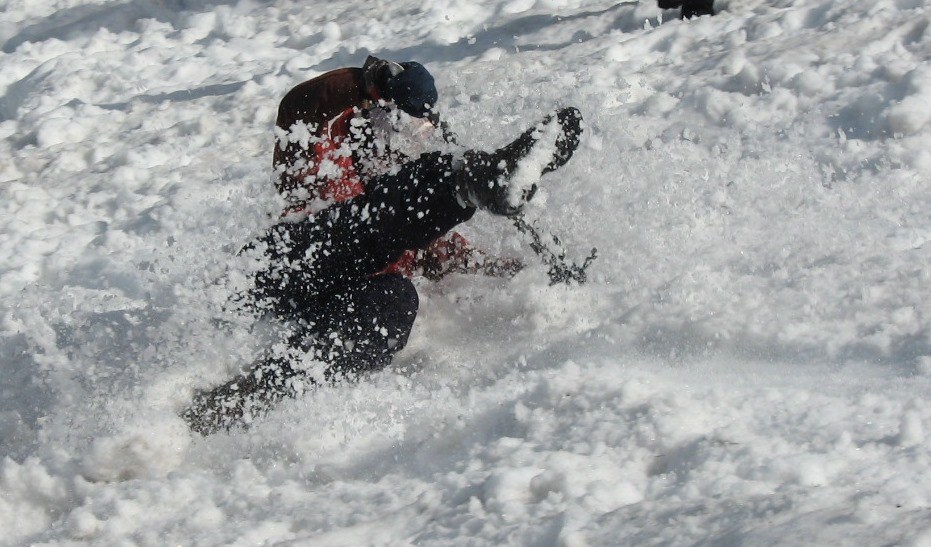
Safety Highlights
April 27 - Guye Peak - Scramble
Injury: None
Cause: Slip on snow
[Leader]
On the way down a steep, wooded slope, a scramble student lost her footing in the steep hard snow. She failed to get quickly into the self-arrest position practiced just a few hours before and began sliding down the hill, first on her back, then on her side.
Her path took her right in front of the trip leader who was braced and able to grab the fabric on her pack and stop her fall as she slid past. Although not potentially fatal, several trees in her immediate path may have caused injury. The student admitted to being shaken up but was not otherwise injured.
[Jim Nelson – Safety Committee]
I wanted to share some thoughts/notes I made about snow travel and crampons.
Crampons seem to be under utilized as a tool for snow travel. I would like to see both Crampons and Ice Ax recognized equally as tools available for snow travel. If given a choice of one or the other (but not both) I frequently am choosing the crampons. Interesting idea I know, don't ask why I would limit myself to one.
Most of the time the benefits of wearing crampons on snow are increased security, much like an ice ax. The ice ax can be used to make a handhold (self-belay), or hopefully stop a slip (self-arrest). Crampons frequently prevent slips, and make it easier to perform a successful self-arrest if necessary.
Possible reasons for culture of not using crampons:
- Easier to trip when wearing crampons. It is recommended to dull down new, or overly sharp points.
- Takes time to stop and put them on.
- Students do what their leaders do.
- Students are taught and tested on self-arrest positions, one of which is lifting their feet off the snow when wearing crampons.
- Prior to Freedom 8, the self-arrest illustrations (I think there are 6 of them) all show self-arrest when not wearing crampons. While crampons should not be worn when practicing self-arrest, anytime the runout is bad or unknown, crampons are very often wanted. Freedom 8 added crampons to 3 of the self-arrest images. 3 with crampons, and 3 without.
- With many snow conditions and especially fresh snow combined with warm temperature, snow builds up under foot eliminating traction from the crampon points. In the last 10-15 years manufactures have added anti-snow devices to their crampons. Most all crampons are now sold with these devices only. While these devices will not shed snow for all snow conditions, they do make a significant difference for most all snow conditions. A significant improvement equipment-wise for snow travel.
Equipment factors: The lack of anti-snow-balling-devices were a common reason for not using crampons in the past. Also, stiff boots with new soles perform better on snow than flexible boots or worn soles when not wearing crampons. You get good security even with worn soles and flexible boots when wearing crampons however.
Add a comment
Log in to add comments.Excellent discussion/debate. Thank you.
How do you address concerns about breaking ankles if they catch before your ice ax stops your slip. If you don't practice ice ax arrest wearing crampons how is it "safer" to do it for the first time on a trip? This person failed to even get into a self-arrest position - - asking them to remember to put their feet up *if* they remembered they had crampons on is asking a lot.
 David Shema
David Shema